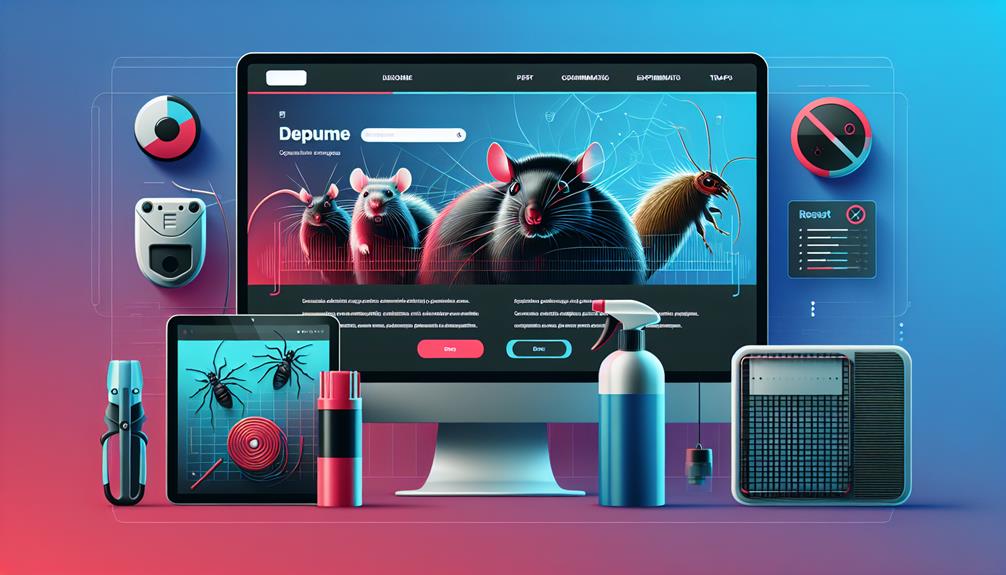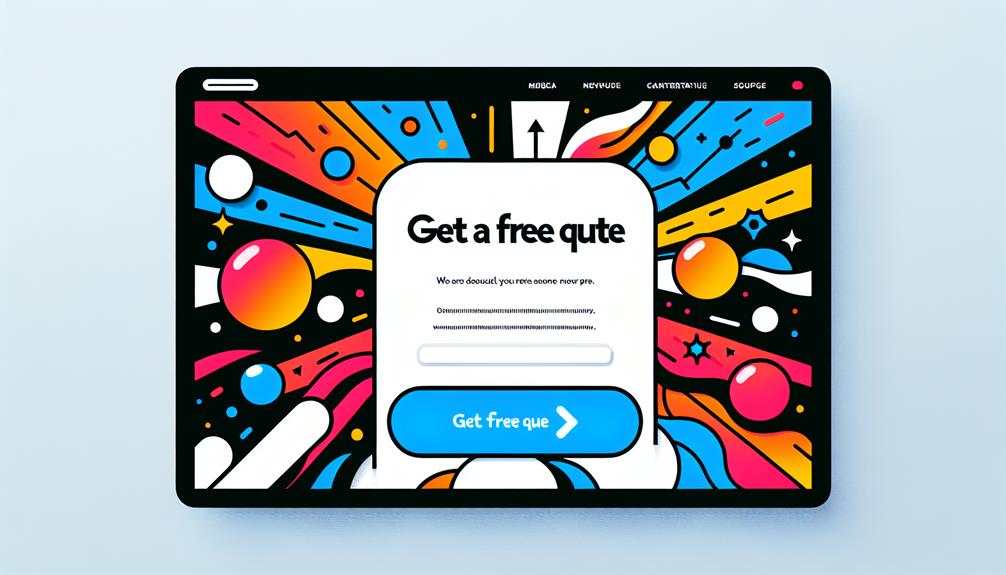So, you’ve decided that the world needs yet another pest control website. Congratulations, you brave soul.
But now comes the real challenge: creating a high-impact website that actually grabs attention and converts visitors into customers. Lucky for you, this how-to guide is here to help you navigate the treacherous waters of web design and online marketing.
From choosing the right design elements to optimizing for search engines, we’ll cover all the essentials for creating a website that leaves a lasting impression.
But that’s not all – we’ll also reveal some insider tips and tricks that will make your website stand out from the competition.
So, buckle up and get ready to take your pest control business to new heights.
Table of Contents
ToggleKey Takeaways
- A high-impact pest control website should have a responsive design that is optimized for mobile devices.
- The website should have a clean and user-friendly layout with clear and logical navigation menus.
- Consistent branding throughout the website, including high-quality images and videos, helps to establish credibility and professionalism.
- SEO optimization, including keyword research, optimized meta tags and descriptions, and fast loading speed, is essential for better search engine rankings.
Choosing the Right Design Elements

When creating your pest control website, it’s crucial to carefully select the right design elements to ensure a visually appealing and user-friendly experience for your potential customers.
Two key factors to consider are responsive design and visual appeal.
Firstly, responsive design is essential for a successful website. In today’s mobile-driven world, more and more people are accessing the internet through their smartphones and tablets. Your website needs to adapt seamlessly to different screen sizes and resolutions. A responsive design ensures that your site looks great and functions well on any device, providing a positive user experience.
Secondly, visual appeal plays a significant role in attracting and retaining visitors. A visually appealing website captures attention and creates a positive impression of your brand. Use high-quality images and videos that are relevant to your pest control services. Incorporate a clean and modern design with a consistent color scheme and typography that matches your brand identity. Remember to keep the layout organized and easy to navigate, ensuring that visitors can find the information they need quickly.
Optimizing for Search Engines
To ensure your pest control website ranks high in search engine results and attracts organic traffic, optimizing it for search engines is crucial. Here are four key steps to help you optimize your website effectively:
- Keyword research: Conduct thorough research to identify the most relevant and popular keywords in the pest control industry. Use tools like Google Keyword Planner or SEMrush to find keywords with high search volume and low competition. Incorporate these keywords naturally into your website content, including headings, titles, meta descriptions, and image alt tags.
- On-page optimization: Optimize your web pages by implementing SEO best practices. This includes optimizing your page titles, meta descriptions, and URLs with target keywords. Ensure that your website structure is well-organized, with clear navigation and user-friendly URLs. Additionally, focus on creating high-quality and informative content that addresses the needs and concerns of your target audience.
- Mobile optimization: With the majority of internet users accessing websites through mobile devices, it’s essential to optimize your website for mobile responsiveness. This means ensuring that your website loads quickly on mobile devices, has a user-friendly mobile layout, and is easy to navigate.
- Link building: Building high-quality backlinks to your website is crucial for improving your search engine rankings. Seek opportunities to collaborate with other reputable websites in the pest control industry and guest blog on their platforms. Additionally, create shareable and engaging content that encourages others to link back to your website.
Crafting Engaging and Informative Content

Craft compelling and educational content that captivates your audience and establishes your expertise in the pest control industry. To create engaging content, utilize multimedia elements such as images, videos, and infographics. These elements not only make your website visually appealing but also help to communicate information more effectively. For example, you can include images of common pests or videos demonstrating pest control techniques. This not only enhances the user experience but also reinforces your credibility as a knowledgeable source.
In addition to multimedia elements, creating interactive features can further engage your audience. Consider adding features like quizzes, interactive maps, or calculators that allow users to assess their pest control needs or learn more about specific pests. Interactive features not only provide valuable information but also encourage user participation, making your website more memorable and shareable.
When crafting your content, remember to be informative and persuasive. Provide detailed information about different pests, their behavior, and the risks they pose. Explain the benefits of professional pest control services and highlight your company’s expertise and experience. Use language that’s easily understandable and avoid jargon or technical terms that may confuse or alienate your audience.
Incorporating User-Friendly Navigation
Ensure seamless navigation for your website visitors by incorporating user-friendly features and intuitive design choices. Here are four key strategies to help you create a website that’s easy to navigate and enhances the user experience:
- Mobile Responsiveness:
With the increasing use of smartphones and tablets, it’s crucial to ensure that your website is optimized for mobile devices. This means that your site should adapt and display properly on screens of all sizes, providing a consistent and user-friendly experience for visitors using different devices.
- Intuitive Layout:
A well-organized and intuitive layout is essential for guiding visitors through your website. Use clear and logical navigation menus that are easy to understand and navigate. Place important information and calls-to-action in prominent positions, making it easy for users to find what they’re looking for.
- Clear Labels and Descriptions:
Use descriptive labels and headings for your navigation menu and page links. This helps visitors understand what they can expect to find when they click on a specific link. Avoid using vague or generic labels that may confuse or mislead users.
- Consistent Design:
Maintain a consistent design throughout your website to provide a cohesive and familiar experience for your visitors. Use the same color scheme, typography, and visual elements across all pages. Consistency helps users navigate your site more easily and builds trust and credibility.
Implementing Effective Call-to-Actions

Implementing effective call-to-actions is crucial for driving user engagement and achieving your website’s goals. Tracking conversions and increasing customer engagement are two important aspects to consider when designing call-to-actions for your pest control website.
To track conversions effectively, it’s essential to set up conversion goals in your website analytics tool. This will allow you to monitor how well your call-to-actions are performing and make data-driven decisions to optimize them. By tracking conversions, you can identify which call-to-actions are driving the most engagement and adjust your strategy accordingly.
In order to increase customer engagement, your call-to-actions should be clear, compelling, and easy to find. Use action-oriented language that encourages visitors to take the desired action, such as ‘Request a Free Quote’ or ‘Schedule an Inspection.’ Incorporate eye-catching buttons or banners that stand out from the rest of your website’s design.
Furthermore, consider the placement of your call-to-actions. They should be strategically positioned throughout your website, especially on high-traffic pages, to maximize their visibility and effectiveness. Test different variations of your call-to-actions to see which ones resonate best with your audience.





